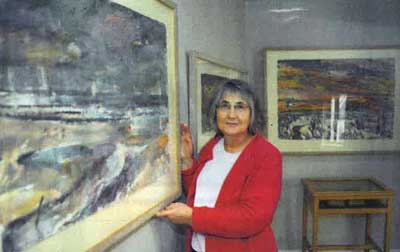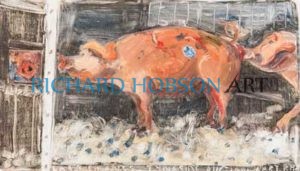Late artist’s paintings capture North-East life

When the Bowes Museum’s conservator of paintings died suddenly at the age of 58, he left behind his own bank of work that has proved to be a wonderful record of the region’s industrial heritage.
 This week, a selection of Richard Hobson’s pictures went on show at the Robinson-Gay Gallery in Hexham – the exhibition a labour of love for his widow, Pat.
This week, a selection of Richard Hobson’s pictures went on show at the Robinson-Gay Gallery in Hexham – the exhibition a labour of love for his widow, Pat.
“The sad thing is there won’t be any more of his paintings and that breaks my heart,” she said. “But while it feels very poignant and emotional. it’s also quite an important thing to do, because artists want their work to be seen and sold and to be known, Richard had things to say about life here and it’s very important he’s still heard.”
From the shipyards of Tyneside – most notably, Swan Hunter’s where he once worked – to the reminders of Tynedale’s lead mines to Northumberland’s farms, his interests were many and varied.
The common thread, though, is a passion for recording the social and industrial heritage of the North-East that was steadily disappearing. One scenic picture in the exhibition features, on closer inspection, a methane flare on Folly Top landfill at Greenside, not far from the Hobson family home in Ryton. Another makes Blyth power station look (almost) attractive.
While a third, of a butcher in Newcastle’s Grainger Market, has produced one of his biggest selling prints.
“I suppose they stimulate a feeling of nostalgia for many people.” said Pat. “It’s a bygone era for a certain generation – we have no more ship building in the North-East, the mines have gone and farming practices have changed. “It was never Richard’s intention, but what he did across his paintings was create a record of times that were either going or gone.”
This is the fourth exhibition of Richard ‘s work since he died in 2004 – two of them were mounted in the Durham Light Infantry Museum and the Shipley Art Gallery in Gateshead.
The Robinson-Gay exhibition will run at the gallery on Market Street until November 9.

